

Tao Te Ching
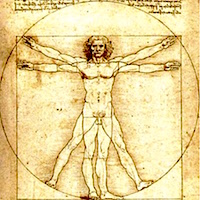
Leonardo da Vinci, Le proporzioni del corpo umano secondo Vitruvio, 1490
Renaissance (1304 – 1576 CE)
The word Renaissance is a blending of the Italian rinascimento, "rebirth" and the word "humanist.” It began in Italy, spread across Europe, continued from the 14th through the 16th century, and inspired the modern humanism of today. It refocused the cultural attention from religion to philosophy, from only the Bible to the almost-lost riches of ancient Greek and Roman thought. It turned people’s eyes from heaven to the world of experience, humanity, science, and nature. It inspired an educational system devoted to philosophy, history, rhetoric, grammar, and poetry; the engagement of common people in their communities and civic life; the creation of a better civilization based on more equality, wisdom, and freedom of thought. Called a pagan revolt funded by oligarchies and economic exploitation, lost in the spirit of freedom without restraint, misled by an intense captivation with the past that smothered youthful creativity, and built on pretense and insincerity; the Renaissance to some extent deserves this criticism while maintaining its dramatic and positive influence on cultural evolution and the modern world. Tired of the “basic badness” philosophy leaking from the notion of original sin, the Renaissance affirmed life and the human experience; the sacredness of the world and humanity; moral freedom, peace, wisdom and compassion. It inspired a cultural liberation that spread throughout the world and became a major influence on the best cultural elements we take for granted today.
Sages (71)
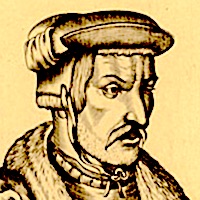
Agrippa (Heinrich Cornelius Agrippa von Nettesheim)
1486 – 1535 CE
Historian of the occult and early, important influence on science
Physician, soldier, polymath, theologian, and the most important magic occultist of his age; Agrippa pushed hard on the ideological and religious belief boundaries of his time and, as a consequence, found himself at odds with inquisitors, banished, imprisoned, and continually threatened. His books shifted historical trends. One attacking the contemporary state of science influenced writers like Goethe, Montaigne, and Descartes. A book he wrote in 1529 argued for the moral and spiritual superiority of women and his 3-volume Occult Philosophy (printed 1531-1533) became a foundational resource for Occultists then and now. In Mary Shelley's famous novel, his writing are described as a major influence on the young Victor Frankenstein and he's similarly cited in works by Christopher Marlowe, Søren Kierkegaard, and J. K. Rowling.

Bassui Tokushō 抜隊 得勝
1327 – 1387 CE
Meditation master without distraction
A student of Sōtō and Rinzai as well as Ch'an schools, Bassui criticized the state of practice and realization during his time. He thought most teachers and students either tilted either too far toward understanding only the words or too far toward only trying to understand the sense; either too much emphasis on dogma and form or too much on freedom and spontaneity. Personally, he refused to wear robes or engage in the traditional rituals and focused on meditation practice itself. He preferred solitude and lonely hermitages; but, because of his clear realization, large numbers of students continually followed and sought him out.

Bhikṣanapa བྷི་ཀྵ་ན་པ། ("Siddha Two-Teeth")
940 CE –
Mahasiddha #61
Bhikshanapa བྷི་ཀྵ་ན་པ། “Siddha Two-Teeth” (10th century CE)
Low caste and very poor, Bhikshanapa unexpectedly inherited some wealth. Like most people today winning a lottery or inheriting unaccustomed riches, he quickly lost it all along with his fair-weather friends. This led to a period of intense self-loathing and depression but also an openness to meeting and hearing a teacher and new way of experiencing the world. Seeing through his consumerism andspiritual materialism, he metaphorically (and possibly physically too), lost all but two of his teeth which became symbols for the balance and harmony of wisdom and skillful means. Resuming his external life style of roaming from village to village, he transformed from a miserable, needy beggar only thinking about himself into a wonderful teacher constantly dedicated to helping others. Mahasiddha #61
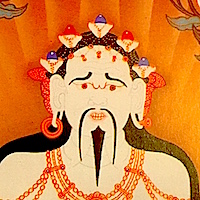
Campaka ཙ་མྤ་ཀ (“The Flower King”)
820 CE –
Mahasiddha #60
Extremely wealthy, powerful, caught up in pleasure, and sitting on a throne made from sweet-smelling flowers; Kampala met a wandering yogi. He tried to impress the sage with the splendors of his kingdom and the beauty of his flowers but the sage told him the truth, that his flowers smelled great but his body not so much, that his realm was wonderful but before long it and he would be gone. Realizing the superficiality and meaninglessness of his life, Kampala began a spiritual path but only shifted his physical materialism into spiritual materialism. Directed to focus his meditation on “the flower of pure reality,” he practiced and finally realized the empty essence of his mind. Mahasiddha #60
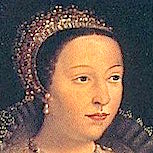
Catherine di Medici
1519 – 1589 CE
Queen of France, niece of Pope Leo X, mother of 3 kings and 2 queens (after resorting to using cow dung and drinking mule's urine), and one of the most influential people of her time; Catherine di Medici’s famous parents died from syphilis shortly after her birth and she was immediately caught up in political intrigues which at one point forced her into a convent for 3 of her happiest years. For 30 years she sponsored musicians, painters, sculptors, architects, Montaigne, and every branch of art. Continually working for peace in a time of many wars, she tried to reconcile Catholic-Protestant factions but underestimating the power of belief over reason, but this only generated wars that brought to the surface her great political and strategic skills but also earned her acclaim as a Machiavellian witch.
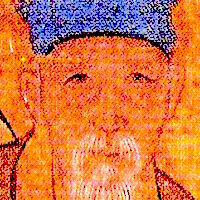
Chén Jìrú 陳繼儒
1558 – 1639 CE
Collector and publisher of rare books, powerful influence on Chinese culture and taste during the 16th century, Chen’s influence continues today. His book, Tea Talks (茶董補) written in 1595 is still popular and quoted in Japan, China, and here now. Creator of the Yixing-style purple clay teapots, his innovations in pottery, painting, literature, and calligraphy continue. Instead of taking the familiar path of respected literati and entering politics, Chen burnt his scholar robes as a symbol of rejecting that path and as a launching into a solitary lifestyle immersed in Buddhism and Taoism. Originator of the famous crane soaring among clouds image, he wrote an autobiography that included his imaginary death.
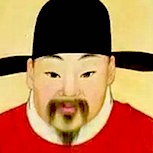
Chiao Hung (Jiao Hung)
1540 – 1620 CE
A voice for the real, for substance, for seeing through concepts and artificiality, and an author of one of the most useful Tao Te Ching compilations, the Lao-tzu-yi written in 1587; Chiao Hung included his own thoughts as well as mainly Sung dynasty commentators. Writing during a time of radical change from Ming Neo-Confucianism into new forms, his influence helped restructure Neo-Confucianism, and brought a resurgence of Taoist insight and influence into Chinese philosophical history.
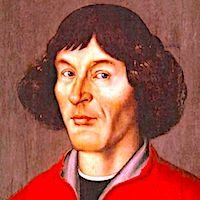
Copernicus, Nicolaus
1473 – 1543 CE
Creator of one of history's greatest revolutions
From our point of view, such a simple and obvious proposition—that the Earth rotates around the Sun. At his time and place in history, however, Copernicus created one of the most far-reaching revolutions of understanding in the history of the world. Mathematician, astronomer, physician, translator, diplomat, economist, polyglot and polymath; his celestial theory threatened the powerful Catholic Church so much it was considered an atheistic blasphemy and because Galileo agreed with it, he was incarcerated for the last nine years of his life. An early humanist, he also developed an important economic concept and theory of money, translated poems from Greek to Latin, and even became an effective and influential government official.
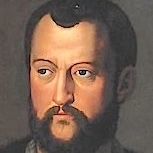
Cosimo de’ Medici
1389 – 1464 CE
Inheritor of a huge fortune; wandering bibliophile; owner of banks, businesses, farms, and factories; friend to cardinals and sultans alike; founder and “first among equals” leader of a political dynasty that helped begin and extend the Renaissance; Cosimo de’ Medici did what the rich need to do today: use their wealth to benefit the world instead of only themselves. In his own and other countries he strongly supported public works, charities, and libraries; funded the work of poets, artists, scholars and philosophers; established an academy for the study of Plato and launched the Renaissance revolution of philosophy over the Middle Ages’ scholasticism - the sense over the words.
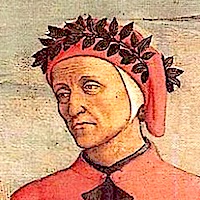
Dante (Durante degli Alighieri)
1265 – 1321 CE
Dante fell madly in love with Beatrice when she was only 8 years old and described his passion as “a God stronger than I who came and ruled me.” This unrequited love lasted through her marriage to another, her death at only 24, and throughout Dante’s life. It inspired his great work, The Divine Comedy now considered the greatest book in the Italian language and most important Middle Ages poem. Dante’s politics led to his exile, loss of citizenship and property, 15 years of poverty-stricken wandering, and a decree for him to be arrested and burned alive. His vivid descriptions of hell were based on personal experience and his writings saved him from the intensity of his suffering as it helped establish modern literature. Florence apologized for his exile 700 years later.

Deqing (Te-Ch’ing)
1546 – 1623 CE
A leading Buddhist monk and poet during the Ming Dynasty, Deqing had a big influence on the Wanli Emperor but was caught in the middle of political conflict between the emperor and his mother as well as tensions between powerful Daoists and Buddhists. In 1595 he was put on trial, imprisoned, and later exiled. His monastery (one of the largest Buddhist centers in China) was burned to the ground. Pardoned after 20 years, he resumed his wandering, teaching, and altruism. Regarded as one of the great reformers of Chinese Buddhism during the later Ming Dynasty, he was renowned and admired as poet, teacher and commentator. Lao-tzu tao-te ching-chieh, Red Pine
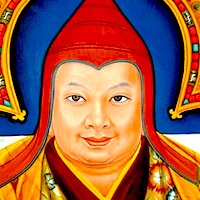
Dölpopa Shérap Gyeltsen དོལ་པོ་པ་ཤེས་རབ་རྒྱལ་མཚན།
1292 – 1361 CE
A teen-aged run-away on-the-road spiritual seeker; Dolpopa became one the most influential Tibetan teachers, one of the most original thinkers in all of Tibetan history, one of the greatest experts on the Shambhala Kalacakra teachings, and a figure so controversial he is still inspiring debate 700 years later. It’s said that when followers of the traditional lineages heard these teachings, they “experienced seizures and scrambled brains.” He described a True Self, a Buddha nature, a "Diamond Self,” an unconditioned, living truth and presence within all of us. He agreed with the traditional teaching that absolute and relative are both empty but taught that they are empty in different ways, the relative empty of self-nature; the absolute empty of other but not empty itself (the Zhentong view). His Jonang tradition was violently suppressed by the Tibetan government during the 17th century, banned by Gelug authorities, and attacked in an attempt to wipe it out by the Fifth Dalai Lama. It survived however as a powerful influence on all of Tibetan Buddhism and crucial to the 19th century Rimé (རིས་མེད) movement.
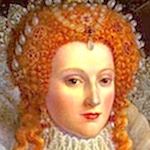
Elizabeth I (Gloriana, The Virgin Queen)
1533 – 1603 CE
Though far from a sage or saint, Elizabeth began her reign with England reviled and powerless but left it 45 years later rich and strong. Called by historians “The greatest ruler England has ever had,” she was patron to Shakespeare, Bacon, Marlowe, and Drake launching the scientific revolution and a golden age of progress and learning. Excommunicated by Pope Pius V, she believed that faith was personal, became “mother of the Church of England.” She opened up trade with the Islamic Ottoman Empire, and helped end the Vatican’s power over all Europe. Though stained by abuses in Ireland, she listened to popular sentiment and advice dedicating her life to her country and people becoming a symbol for good government and resistance to foreign threat.

Erasmus (Desiderius Roterodamus)
1466 – 1536 CE
"Greatest scholar of the northern Renaissance"
"Prince of the Humanists,” famous translator, globalist and true citizen of the world; Erasmus emphasized a middle way approach between Luther and the Pope during the Reformation angering both sides. Not many know much about about him but his legacy is well known in the sayings and phrases he compiled and popularized. Some of his sayings like “The grass is always greener on the other side of the fence,” “God helps those who help themselves,” “Don’t put the cart before the horse,” “Leave no stone unturned,” “In the land of the blind the one-eyed man is king,” “No sooner said then done,” “Between a rock and a hard place,” “Call a spade a spade,” “Women – can’t live with them or without them,” “Like father like son,” “To look a gift horse in the mouth,” “To break the ice,” “To cut to the quick,” “One step at a time,” “A necessary evil,” “What’s done cannot be undone,” “Up to his eyeballs,” “To sleep on it,” have not only entered into common conversation; but also, become a powerful influence on Western culture.

Francis Bacon
1561 – 1626 CE
“Father of the scientific method,” Lord Chancellor of England, orator, jurist, and philosopher; Francis Bacon represents a huge step in the evolution of consciousness but not before indulging in a sybaritic lifestyle, being charged with 23 cases of corruption, being banned from Parliament and imprisoned in the Tower of London. In his ex-con life, he undermined the strength of religion, railed against tradition and authority, became “the most powerful and influential intellect of his time,” warned of the rich getting too rich as a cause of social disease and revolt, the likelihood of new inventions causing more harm than help, and championed the rise of reason and science that brought about our modern world.
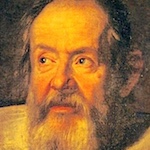
Galileo
1564 – 1642 CE
Arrested by the Inquisition for the last 9 years of his life but called by Einstein “the father of modern science;” books banned by the Catholic Church but called by Stephen Hawking responsible for the birth of modern science; condemned and persecuted by conservative contemporaries but called by Grotius “the greatest mind of all time;” Galileo – though living in a time when “heretics” were burned at the stake – raised the status of science, with his telescope designs demonstrated the universe’s immensity, and helped science separate from both philosophy and religion.

Gaspara Stampa
1523 – 1554 CE
Unrecognized during her life with only 4 of her more than 300 sonnets and poems published, Gaspara is now considered one of the best 16th century lyricists and greatest Italian woman poet of any time. From a merchant class and not nobility like the other poets of her time, she didn’t let her humble origin and lack of credentials stop her from writing some of the most memorable works of her era. Also a wonderful singer and lute player, she transformed the pain of unrequited love into inspired artistic creation that became a milestone in women's literature and a huge inspiration for Rainer Maria Rilke and many others.
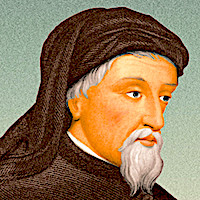
Geoffrey Chaucer
1343 – 1400 CE
“Father of English literature”
Scientist, philosopher, diplomat, “Father of English literature,” and greatest Middle Ages English poet; Chaucer transitioned literature in French and Latin to an English for the English-speaking. Also a page, bureaucrat, soldier, messenger, administrator, and valet; he portrayed and spoke for the common person. This support for the populace however created a backlash from the monarchy and he was fined and imprisoned. Claimed by the Protestant movement as an early forefather, he tried to separate religion from superstition, was rumored to have beaten up a Franciscan Friar on a public street, and supported religious reform.
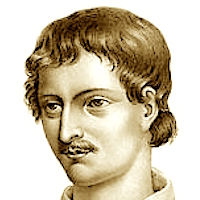
Giordano Bruno
1548 – 1600 CE
Giordano Bruno (1548 – 1600)
Like Galileo, a "martyr of science," Dominican friar, Epicurean poet, cosmological mathematician; Bruno fled his monastery and wandered through France and Italy teaching. Burned at the stake by the Roman Inquisition for his scientific, pantheistic, and Epicurean views; Bruno first described stars as distant suns with planets of their own, championed the Copernican view that the earth is not the center of the universe, and taught the dangerous view that likewise people and our civilizations are not the center of the cosmos but only a tiny part of something much larger. This led to an 8-year trial, his torture and death but also a strong foundation for the newly emerging sciences and the openness to free thought.
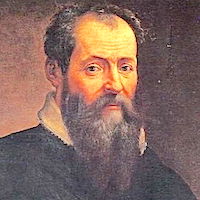
Giorgio Vasari dʒordʒo vaˈzaːri
1511 – 1574 CE
The first art historian, friend and student of Michelangelo, first to use in print the term "Renaissance,” architect, politician and painter; Vasari praised competition and was one of the first writers to use this term related to economics. The first to write a series of biographies about famous artists and describe the continuity of art, his dedication to artists and their art was so great that he once ran into the peril of a rioting crowd to rescue the pieces from an arm of Michelangelo’s statue “David” they had broken with a bench. Unlike many artists unrecognized until after their death, he was famous during his lifetime, became very wealthy, and even a powerful politician.
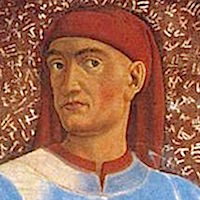
Giovanni Boccaccio dʒoˈvanni bokˈkattʃo
1313 – 1375 CE
Close student, friend and collaborator with the “Father of the Renaissance,” Petrarch; Boccaccio became a popular poet/writer, “the first Greek humanist in Western Europe,” and promoted the ancient literature, philosophy, and history which set the stage for the Renaissance. His book on classical mythology became a key reference for 400+ years and challenged Christian belief that only the Bible was relevant, that there was only harm in “pagan” writings. In an early nod to feminist proposition, he wrote the first collection devoted to the biographies of famous women. Living through a tumultuous time of political intrigue, the executions of his friends, bitter poverty and bad health; he resisted many of the era’s superstitious and setting-sun forces; translated works by Homer, Euripides, and Aristotle; and helped launch one of history’s most influential shifts, the Renaissance.
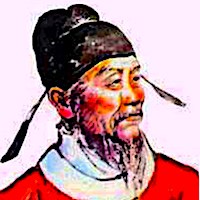
Guo Shoujing 郭守敬 (Ruosi, Kuo Shou-ching)
1231 – 1316 CE
One of the history's most influential scientists
Most highly regarded Chinese engineer, astronomer, mathematician of all time; a child prodigy and Kublai Khan’s chief science advisor, Guo Shoujing developed a calendar used for 363 years, the longest use of one calendar in all of Chinese history and the foundation for the Gregorian calendar that is still the world’s most used calendar. Spreading an approach called "evidential learning,” he became the leading influence on the development of Chinese science. He invented astronomy tools that calculate the accurate length of a year, an astrological compass using the stars instead of magnets, perfected watches and clocks that greatly increased accuracy, and perfected irrigation and reservoir techniques that increased harvests for hundreds of years.
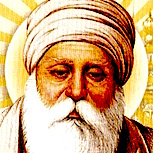
Guru Amar Das ਗੁਰੂ ਅਮਰ ਦਾਸ
1479 – 1574 CE
Born into a farming family and a shopkeeper by trade, Amar Das didn’t become the Sikh guru until he was 73 years old but still had a profound influence. He convinced the Muslim emperor Akbar to decrease the persecution of Sikhs and Hindus and to decrease taxes. Against guru wealth and luxury, strongly against the caste system and corruption of all kinds, he spoke against the practices of sati and purdah, wouldn’t let recluses and ascetics become Sikh or Sikhs visit Muslim holy places, and required that anyone who wanted to see him must first eat from the common kitchen.
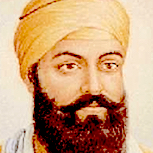
Guru Angad ਗੁਰੂ ਅੰਗਦ ਦੇਵ
1504 – 1552 CE
The son of a merchant, refugee from Babar’s invasion, and chosen as successor by Guru Nanak over his own sons; Angad developed Gurmukhi script, the main way of writing the Punjabi language. This helped give Sikhs a strong identity and ability to study ancient wisdom in their own language without need of translation and separate from the Sanskrit religious traditions and solidify Sikhism as a separate religion. He was also a strong influence in undermining the caste system and furthering the Sikh vision of equality.
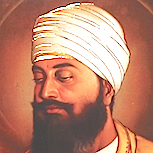
Guru Arjan ਗੁਰੂ ਅਰਜੁਨ ਦੇਵ
1563 – 1606 CE
Great musician and singer, youngest son of Guru Ram Das; Guru Arjan laid the foundation for the famous Golden Temple but instead of going along with the prevalent view that it should be the highest building in the area, emphasized humility and built it on the lowest elevation possible. And to counter the Muslim tradition of the entrance on the west and the Hindu version of it being in the east, he made entrances on all four side. Compiling the first edition of the Sikh “Bible,” Holy Guru Granth Sahib and avoiding sectarianism he included teachings of Hindu and Muslim saints. Jailed and tortured by a corrupt Muslim emperor, Arjan refused to convert or change his teachings and died changing the direction of Sikhism.
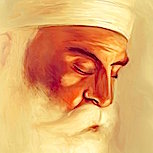
Guru Nanak Gurmukhi ਗੁਰੂ ਨਾਨਕ
1469 – 1539 CE
“One of the greatest religious innovators of all time” and founder of Sikhism – one of the world’s newest religions; Guru Nanak traveled widely learning and teaching in the non-thought lineage of non-duality beyond concepts of self and other. He spread a message of replacing revenge and anger with peace and kindness; of each person’s direct access to the highest realizations without need of priest or ritual; of the inseparability of spiritual and everyday life in the world. He set up a political-social-spiritual system based on goodness, virtue, and equality: a much-needed message for our modern world.
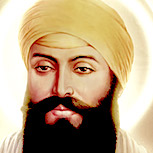
Guru Ram Das ਗੁਰੂ ਰਾਮ ਦਾਸ
1534 – 1581 CE
Leading a revolt against superstition, Guru Ram Das emphasized egocentrism as our main problem and - along with quiet meditation - actively helping others as the main remedy. He described the reason for his long beard as a way of dusting off the feet of others. He built the Sikhs’ holiest center, Amritsar, wrote a hymn still used in standard Sikh weddings, and emphasized the importance of deeds over caste, compassion over materialism. He exposed the hypocrisy of prejudice, misogyny, and cultural chauvinism disguised as religion and exemplified the way of direct realization beyond concept and form.
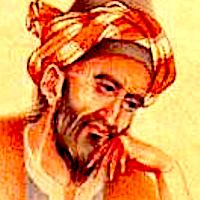
Hafiz خواجه شمسالدین محمد حافظ شیرازی (Hafez, Shams-ud-Dīn Muḥammad)
1315 – 1394 CE
Inspiring friend to the true and free human spirit
Mystic poet, “tongue of the invisible,” living oracle, “a poet for poets,” one of the world’s best spiritual friends and guides; Hafiz wrote poems that dissolve the walls separating people from each other, from nature, and from sacred awareness. For centuries readers in the Persian world have used him as a kind of I Ching or astrology to find practical, personal, and wise advice for the quandaries of daily life. Even Queen Victoria is rumored to have used his poems in this way. Although a Sufi in the Islamic traditions, Hafiz obviously goes far beyond and kind of sectarian fixation and exposes a true realization of universal truth, the perennial philosophy, and authentic, sacred-world living.
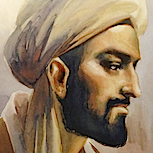
Ibn Khaldun أبو زيد عبد الرحمن بن محمد بن خلدون الحضرمي
1332 – 1406 CE
One of the world’s greatest political theorists, considered one of the greatest philosophers of the Middle Ages, a founding father of modern economic theory, sociology, and demography; Ibn Khaldun was a a North African Arab historian who defined government as "an institution which prevents injustice other than such as it commits itself" and taught that government is a necessary evil that should be constrained to a minimum. Toynbee described his writing as “the greatest work of its kind that has ever yet been created by any mind in any time or place” and his influence is still strong throughout the world.
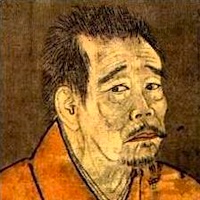
Ikkyū Sōjun 休宗純
1394 – 1481 CE
Famous trickster, flute player, and bringer of Zen awareness into everyday life
Folk hero, poet, Rinzai heretic and saint, eccentric Zen monk, and one of Japan's most famous flute players; Ikkyū's unconventional approach to Buddhism became a significant influence in popularizing Zen teachings to the general population. A Trickster, he rejected and criticized the religious establishment's hierarchy as well as the popular formalities, rituals, and societal norms of his time. Known as a great calligrapher and sumi-e artist, he also evolved and popularized the Japanese tea ceremony. His teachings emphasized direct, experiential, spontaneous understanding and he took a strong position against celibacy. Going further, he even taught that love and sex furthered people on a spiritual path and he encouraged sex with prostitutes, and either heterosexual or homosexual lovers. A continuous influence on Japanese culture, the popular TV series about him ran for 296 episodes.
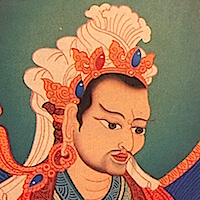
Indrabhūti ཨིནྡྲ་བྷཱུ་ཏི། ("The Enlightened Siddha-King")
892 CE –
Mahasiddha #42
Indrabhuti ཨིནྡྲ་བྷཱུ་ཏི། The Enlightened Siddha-King (late 9th century)
“The first tantrika,” archetypal tantric king, and inspiration for several tantric lineages; Indrabhuti for political reasons pledged his Buddhist sister Laksminkara in marriage to the prince of a neighboring Hindu kingdom. She went to live with the neighboring prince but soon became disillusioned with the materialism, superstition, and decadence of her new country. Late one night she fled the palace and found a cave in the mountains where she lived and practiced meditation, attained enlightenment and scandalously started teaching untouchables. This greatly upset the Hindu king but inspired Indrabhuti to do the same and leave the comfort of palace life to devote himself completely to his spiritual path. He rejected however a path that rejected sensual pleasure and sex and practiced the Guhyasamaja father-tantra in the Anuyoga Dzogchen lineage. Mahasiddha #42
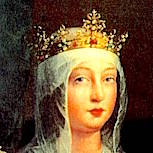
Isabella I (of Castile)
1445 – 1504 CE
Wise Renaissance queen, patron of the arts, strong centralizing leader, Christopher Columbus’ financier known for her fairness and justice, and the first woman depicted on both a US coin and US postal stamp; Isabella - after helping to reunify Spain, reorganized the government, dramatically brought down the debt and the crime rate to the lowest it had been in many years, and established Spain as the first global power dominating Europe for more than 100 years. Although she persecuted Jews and Muslims, her life was scrutinized by the Catholic Church for 500 years before being sainted in 1974 with the title, "Servant of God.”
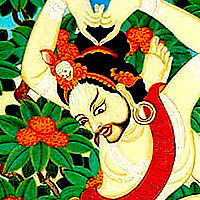
Jālandhara ཛཱ་ལནྡྷ་ར་པ། ("The Ḍākinī's Chosen One")
888 CE –
Mahasiddha #46
Jalandhara ཛཱ་ལནྡྷ་ར་པ། “The Ḍākinī's Chosen One” (late 9th century)
Another wealthy and privileged brahmin who saw through the materialistic values of his culture and renounced it to search for a more meaningful life, Jalandhara left everything to live in a cremation ground meditating. Going on to become an important mother-tantra siddha, one of the nine naths, and guru to 10 of the 84 Mahasiddhas; he founded one of the two main nath lineages (A Hindu tradition favored by Kabir that blended Shaivism, Buddhism and Yoga traditions using Hatha Yoga to transform the physical into awakened perception of “absolute reality”), taught practices that unify the male and female forces, dissolve the subject/object dichotomy, and open the non-dual doors of perception. Mahasiddha #46
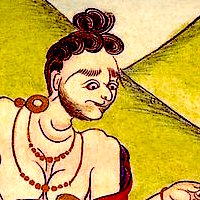
Jayānanda ཛ་ཡཱ་ནནྡ།། ("Crow Master")
11th - 12th century
Mahasiddha #58
A Tantric Buddhist master practicing in Bengal during a time when Buddhism was illegal, Jayananda was exposed by a jealous neighbor and imprisoned by the anti-Buddhist king. Before being captured though, he had befriended and fed a big flock of crows. In Tibetan culture crows are considered bad omens, capable of bringing great harm, and feared. But in a symbol of tantric transformation, Jayananda had made the crows allies. Then—metaphorically as crows or symbolically as an inclusion of the negative—the king was upended, reduced to hiding under his thrown, and as a consequence became a great and influential siddha himself. Mahasiddha #58
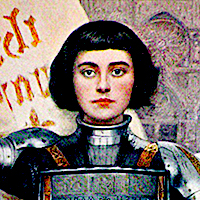
Joan of Arc Jeanne d'Arc
1412 – 1431 CE
Mystical, visionary warrior
Famous French heroine, Roman Catholic saint, warrior and mystical visionary; Joan of Arc was sent on a relief mission during the Hundred Years' War between France and England. Turning relief into victory, she quickly became a successful military leader and set up a final French victory. Captured by a group of dissident French nobles however, she refused to abandon her convictions and was burned at the state when still only 19 years old. This led to her beatification by the Church and Napoleon’s making her into a French national symbol. For subsequent generations, she became a powerful symbol of a brave and accomplished woman.

John Donne
1572 – 1631 CE
Leading and inventive metaphysical poet, cleric, politician, womanizer, and one of the greatest love poets; John Donne brought a distinctive style filled with paradoxes and ironies to poems ranging in topic from deeply religious to vibrantly erotic. Fired and imprisoned because of a secret marriage, he lived in poverty for many years while devoting his attention to the idea of “true religion” beyond the superficiality of undigested concepts and superstitious belief. A strong influence on W. B. Yeats, Hemingway, T. S. Eliot, Dylan Thomas, Coleridge, W. H. Auden, Van Morrison, Robert Oppenheimer; his impact continues today with examples like the movie The Incredibles, that took its Nomanisan Island from his famous saying, "No man is an island.”
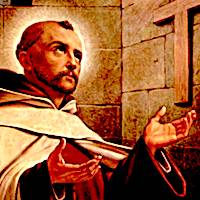
John of the Cross
1542 – 1591 CE
Mystic, religious poet, major Counter-Reformation influence, and Roman Catholic saint; John of the Cross became one of the best Spanish writers of all times. While imprisoned and tortured by conservative Carmelites opposed to reform, he wrote one of his most famous poems (Spiritual Canticle) on scraps of paper secretly given to him by his jailer. After a dramatic escape, he became a friend, supporter and confessor of Teresa of Ávila and founded the first monastery of friars following her principles. In the Christian mystical tradition of the Desert Fathers, Plotinus, and Meister Eckhart; he taught a perspective above sectarian in-fighting, rigid dogmatic views, and unthinking allegiance.
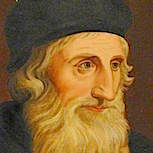
John Wycliffe
1320 – 1384 CE
Iconoclastic theologian, philosophical dissident, and champion of the common people; Wycliffe translated the Bible into English undermining Church authoritarianism and belief that people needed a spiritual mediator to tell them what was true, ethical and good. He criticized the political power, materialistic wealth and corruption common with the clergy and papal hierarchy of his time helping to even out the extreme rich-poor gap. He influenced Jan Hus, Martin Luther, and the beginnings of Protestantism; he was condemned as a heretic, his bones were dug up, his writings were burned and banned - and his influence continues.
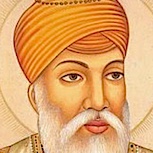
Kabīr कबीर
1399 – 1448 CE
Formidable iconoclast and deeply spiritual but anti-religious leader, a simple weaver but greatest poet of his time and place; Kabīr was born and raised as a Muslim, studied with a Hindu guru, became critical of both traditions, was physically threatened by both and after he died revered and claimed by both. From his background of a Muslim father and Hindu mother, he worked tirelessly to unite both traditions with a wisdom beyond their sectarian views. An important influence on Guru Nanak and the founding of Sikhism, his poetry and wisdom continue today in mainstream Indian film, folk songs, and even progressive rock.
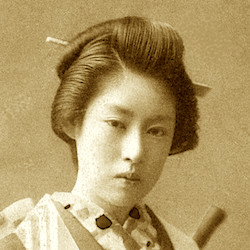
Kakusan Shido
1252 – 1305 CE
Kakusan Shido, Horiuchi (1252 - 1305)
During a time when men could easily divorce their wives but it was almost impossible for women and knowing personally how often women were used as pawns in male wars and revenge killings, Shido established Tokeiji 松岡山東慶寺 - a Rinzai Zen convent and the first used to shelter women.
Shido’s husband was the ruler known for repelling Kublai Khan’s Mongol invasion, spreading Zen Buddhism, and establishing the Samurai tradition. When he died, her dealing with the political intrigue led to this inspiration and the refuge called the “Divorce Temple.” It operated for over 600 years, sheltered runaway wives, gave them counseling and legal help. After helping two daughters of emperors, an emperor gave this extraterritorial rights. This empowered it to officially help divorcées and greatly increased its ability to help women in need.
During just the Tokugawa period, 2,000 women were sheltered and Zen luminaries like Reginald Horace Blyth, and D.T. Suzuki are buried there.
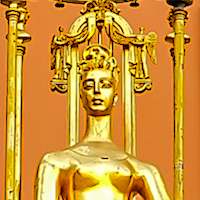
Khutulun (Turandot)
1260 – 1306 CE
Mongolian "Tiger Woman"
Daughter of Genghis Khan's cousin, Kaidu—the most powerful Central Asian ruler of the time—Khutulun became a famous warrior, wrestler, and political influence. Marco Polo described how she could ride into an enemy swarm and snatch a captive like a hawk grabbing a chicken. Beautiful, powerful, and charming; she challenged her many suitors with wrestling competitions and won thousands of horses before finally accepting one. She was chosen by her father to succeed him but the male relatives stopped the succession. She became known in the West as Turandot and memorialized by François Pétis de la Croix, Carlo Gozzi, Friedrich Schiller, Goethe, and—most famously—by Giacomo Puccini. Her renown continues today in many stories and movies, as a popular and extremely successful Australian race horse, and in the Netflix series, Marco Polo.
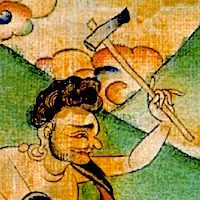
Koṭālipa ཀོ་ཊཱ་ལི་པ། ("The Peasant Guru")
1084 CE –
Mahasiddha #44
Kotalipa ཀོ་ཊཱ་ལི་པ། “The Peasant Guru” (2nd half of eleventh century)
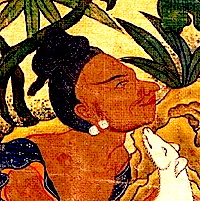
Kukkuripa ཀུ་ཀྐུ་རི་པ། ("The Dog Lover")
915 CE –
Mahasiddha #34
Kukkuripa “The Dog King” ཀུ་ཀྐུ་རི་པ། (10th century CE)
A wandering ascetic, Kukkuripa found and adopted a starving dog brought it back with him to the cave where he lived and meditated. Kukkuripa’s meditation practice took him to pleasurable, psychological god realms but memories of his dog connected him back to the real world where he saw his loyal dog sad, thin, and starving. Spurning the luxury, comfort and extravagance; he returned to the cold, dark, very uncomfortable cave out of compassion for the dog. The dog then became his teacher blending his mind-stream with the deepest insight of all the Buddhas. Naropa sent Marpa to study with him and he became one of Marpa’s most important teachers, famous for his songs of realization, and a “patron saint” for all the downtrodden and oppressed. Mahasiddha #34
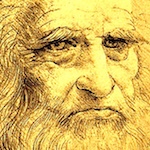
Leonardo da Vinci
1452 – 1519 CE
One of the most talented people to have ever lived, original “Renaissance Man,” father of paleontology, ichnology, and architecture; with a passionate curiosity and interest in everything, da Vinci’s genius extended to science, music, mathematics, engineering, painting, architecture, sculpture, anatomy, geology, astronomy, botany, history, and cartography. Remarkable inventor, mystical pantheist, vegetarian, savior of caged birds, and exemplar of journey-without-goal, he wrote over 5000 pages but didn’t finish one book, many of his commissions, even some of his greatest paintings, and claimed that one of the his most famous paintings, The Mona Lisa was incomplete.

Lin Mo Niang 林默娘
970 CE –
Lin Mo Niang (silent girl) 林默娘 akaMa Zhou, Mazu, Matsu, Tian Hou (c. 970)
"Empress of Heaven,”patron of seafarers, Confucian, Taoist and Buddhist adept, rainmaker, and Fujianese shamaness from an impoverished and uneducated fishing village where no one could read; Lin Mo Niang lived during a time of mass migrations from China’s north when refugees blended their culture with her local one. Most popular today in Taiwan but banned in Mainland China, her following called Mazuism has over 1500 temples in 26 countries, and statures as high as 139’ (42.3 meters). Equated with Guan
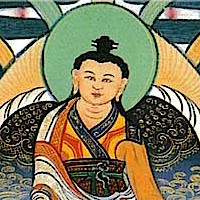
Longchenpa ཀློང་ཆེན་རབ་འབྱམས་པ། (Longchen Rabjampa, Drimé Özer)
1308 – 1364 CE
A child prodigy who could read and write at age 5, started learning the Nyingma tantras at 7, and was first ordained at 12; Longchenpa studied science as well as philosophy and Buddhism. One of ”the Three Omniscient Ones,”most important writer on the Dzogchen teachings, and abbot of the first Himalayan Buddhist monastery at Samye; he wrote more than 250 books and helped unify many diverse streams of Tibetan teachings into a comprehensive system known as Longchen Nyingthig. Considered an incarnation of a famous princess, Longchenpa was not only a monk but also fathered a son and daughter.
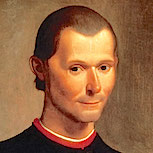
Machiavelli (Niccolò Machiavelli)
1469 – 1527 CE
Unjustly vilified by history as well as his contemporaries, Machiavelli is known as the “founder of modern political science,” a major influence on the USA’s founding fathers, and the development of modern science. Personified with unscrupulous, immoral political activity, devious deceit, realpolitik and evil tyrants; many of history’s true heroes like Spinoza, Rousseau, Francis Bacon, John Milton, Montaigne, and Descartes secretly considered him an inspiration for the Enlightenment that followed 200 years later. Rousseau thought his book The Prince - far from condoning - was not written as advice to ruler who already understood these principles but rather satirically exposed their corrupt methods to the common people. Not the source for the quote, “The end justifies the means,” Benjamin Franklin and Thomas Jefferson considered him a “partisan of liberty” and John Adams seriously studied his philosophy and used it to clarify the Constitution’s idea of mixed government.
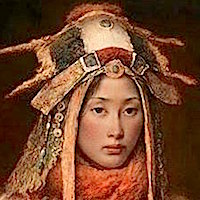
Mandukhai Khatun ндухай сэцэн хатан (Queen Mandukhai the Wise)
1449 – 1510 CE
Queen Mandukhai the Wise
Greatest Mongolian monarch in the 800 years after Genshis with enemies on every side, brilliant strategist, and wise leader; Mandukhai for the first time in over 100 years united the Mongolians under a strong central government. Recognizing Genghis Khan’s mistakes in establishing a Mongolian legacy, she set in place a stable government that lasted for generations up until World War II. After her heirless husband was poisoned by a Ming dynasty spy, Mandukhai adopted Batmonkh the recently orphaned and last living direct Genghis Khan descendent making here the leader of the civil war plagued Mongol Empire. She defeated the warring factions, married Batmonkh when he turned 19, and continued dramatic military victories over both new factions and Chinese incursion, fighting in battle even when pregnant and birthing babies. She became the reason for the largest and fastest Great Wall of China expansion. Columbus made his voyages in an attempt to find her; and, though not knowing her name, carried a letter to her from his Spanish monarch patrons. Her descendants include all of the Mongolian nobles and khans that followed after her. Inspired by and continuing her example, these descendants converted to Buddhism and in 1578 began the Dalia Lama lineage when they gave the Tibetan monk Sonam Gyatso this title, dalai (ocean—'Sea of Power') first used by Genghis Khan's son, Ogodei.
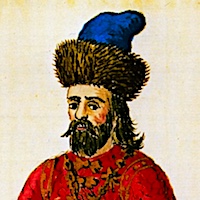
Marco Polo
1254 – 1324 CE
Epitome of adventurous business, political, and geographical exploration
Merchant par excellence, adventurous explorer, successful administrator for Kublai Khan in China, and popular author; Marco Polo became an inspiration for Christopher Columbus, the import-export global economy, and for most of the explorers who came after him. Setting off from Europe when only 17 years old, he spent 24 years in China becoming the governor of Hangzhou, returned to find his city of Venice at war with Genoa, tried to help but only ended up in jail where he described his travels to a cellmate who used them to write the famous book, Travels of Marco Polo. The difficulty and danger of travel in those days in illustrated by survival statistics: on their journey back from China, more than 600 people began with them but only 18 survived the 2-year journey to Hormuz. Later he expanded his business interests to become very wealthy, married and had three children. Frequently accused of exaggeration and fabrication, on his deathbed he responded to this criticism by saying, "I have not told half of what I saw."
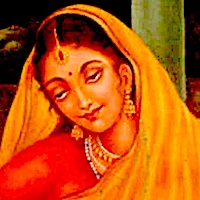
Meera (Mirabai, Meera Bai )
1498 – 1546 CE
Inspiring poet, cultural freedom inspiration
Royal family princess, mystical poet, Bhakti movement saint; Meera’s deep devotion expressed in public dancing and singing aroused strong opposition, rejection, and assassination attempts from the Royal Family. Dedicated to a formless divinity, she wrote countless devotional poems called bhajans that became and remain popular on temples across India. Her devotion and courage inspired folk tales, legends, poets, and now popular literature, comic strips, and movies. Her life became a symbol for the common people’s suffering and inspirations for creating a better world as well as for women struggling in an environment trying to force them into role-based boxes. Also one of 16 Sikh bhakti saints, she became a symbol of freedom and following a personal path of inspiration rather than bowing to social, family, and political pressures of conformity.

Meister Eckhart (Eckhart von Hochheim)
1260 – 1328 CE
Philosopher, theologian, and mystic; Meister Eckhart represents a cultural and philosophical pivot at the end of the Middle Ages. In his own words but like Lao Tzu and the Buddha, he taught that Enlightenment is hidden inside our hearts and through emptiness, compassion and egolessness we become one. Though brought before the Inquisition and tried for heresy, his influence since includes from Schopenhauer (who said, “Buddha, Eckhardt, and I all teach essentially the same.”), to the Theosophical Society, to the politics of the UN’s Dag Hammarskjöld, to the psychology of Erich Fromm, to artists like Van Gough and Dürer, to authors like J. D. Salinger, and in modern times to theologians like Matthew Fox and Eckhart Tolle.
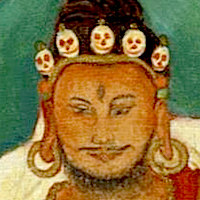
Mekopa མེ་ཀོ་པ། ("Guru Dread-Stare")
1050 CE –
Mahasiddha #43
Mekopa, མེ་ཀོ་པ། Guru Dread-Stare (11th century)
Always cheerful and kind Bengali food merchant taken as a student by a yogin customer, Mekopa saw into the vastness of his own mind, the uselessness of chasing desires, and harmfulness of action based on duality. His realization led him far beyond the limits of status quo, conventional social standards and behavior; into a lifestyle unbound by concern for people’s opinion, wandering about a cremation ground “like a wild animal” and into towns like a mad saint with dreadful, staring eyes. Mahasiddha #43

Michelangelo
1475 – 1564 CE
One of the greatest artists of all time and complete “Renaissance man,” much of Michelangelo’s painting, sculpture, and architecture stands with the world’s most famous. Also a poet and engineer and unlike many famous artists, his genius was recognized during his lifetime – he was the first Western artist with a biography published while still alive. His statues of David and the Pietà are the most famous sculptures in the west, his painting of the Sistine Chapel ceiling is the “cornerstone of Renaissance art,” his architectural innovations were revolutionary and St. Peter’s Basilica is regarded as the greatest building of its age and remains one of the two largest churches in the world.
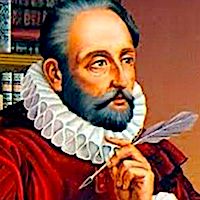
Miguel de Cervantes
1547 – 1616 CE
One of the world's best novelists
Soldier, purchasing agent, tax collector, a cardinal's assistant, Barbary pirate captive for 5 years, and Spanish prisoner for 3 years; Cervantes became the most famous Spanish language writer, one of the world's best novelists, and writer of—after the Bible and the Tao Te Ching—the world's most translated book, Don Quixote. Translated into 140+ languages with over 700 editions, many critics believe it the best work of fiction ever written and the first modern novel. Considered the origin of psychoanalysis, one of his books impressed Sigmund Freud enough to inspire him to learn Spanish just so he could read it in the original language.

Ming Taizu 明太祖 (The Hongwu Emperor, Zhu Yuanzhan)
1328 – 1398 CE
One of the most influential emperors in all of Chinese history
Peasant farmer, destitute beggar at 16 when his family was killed in a flood, and Buddhist monk until his monastery was destroyed by the Mongols, Ming Taizu dramatically rose above his circumstances and led the rebellion against the Yuan and founded the Ming dynasty. As emperor he protected the poor, created irrigation systems, planted 50 million trees, and distributed land to peasants greatly increasing their standards of living. The population increased from 60 to 100 million. He studied the Tao Te Ching, based his government on Taoist principles drawing up a new legal code considered one of the greatest achievements of the age and also supported Islam. He prevented corruption and protected the weak but per historians was corrupted himself in later life.

Montaigne
1533 – 1592 CE
Grandfather of the Enlightenment
Son of a fish-seller, grandfather of the Enlightenment, “the first modern man,” statesman, author, apostle of doubt and moderation, Renaissance author most in harmony with the modern mind; Montaigne wrote some of history’s most influential essays. A master story-teller balancing philosophy with personal anecdote, deep insight with entertainment, wisdom and humor; he built on Lucretius and had a direct influence on Francis Bacon, Descartes, Pascal, Rousseau, Emerson, Nietzsche, and Shakespeare. “The most pagan of Christians,” called “the wisest Frenchman that ever lived,” he is still “read today as if he had written yesterday
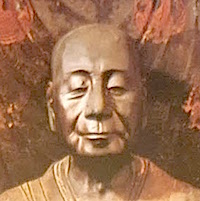
Mujū Dōkyō 無住道曉 (Ichien Dōkyō )
1227 – 1312 CE
”The Non-Dweller”
Champion of diversity and pluralism, Mujū Dōkyō appreciated and practiced many traditions only disapproving of intolerance, secularism, and all kinds of chauvinism. Mainly considered in the Rinzai tradition, he also studied Tendai, Pure Land, Hosso, Shingon, and Ritusu and criticized all forms of fundamentalism and teachers who denounced practices other than the ones they taught themselves. He wrote the Shasekishū (Sand and Pebbles), Zen anecdotes and stories immortalized by Paul Reps in Zen Flesh, Zen Bones.
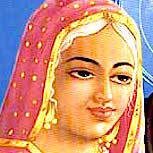
Nanaki (Bibi Nanaki ji)
1464 – 1518 CE
Elder sister, surrogate mother, and first disciple of the first Sikh guru, Nanak; Nanaki was instrumental in giving birth to the Sikh tradition. With a sister’s deep affection and a mother’s tender nurturing, she recognized Guru Nanak’s wisdom and potential when he was very young, encouraged his spiritual development, and became the first Sikh. She supported him when their father tried to force him into a conventional lifestyle as well as his rebellion against Hindu customs and rituals. She arranged his marriage, helped take care of his sons, and became a symbol and inspiration for the closeness of family and sister-brother relationship.
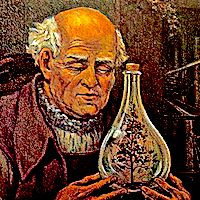
Paracelsus (Theophrastus von Hohenheim)
1493 – 1541 CE
Revolutionary, shamanistic alchemist
“Father of toxicology,” alchemist, medical revolution pioneer, and astrologer; Paracelsus was venerated by the Rosicrucians, intensively studied by Carl Jung, and revered by future physicians who universally recognize his medical contributions. He criticized the popular purging and bloodletting techniques of his time as well as the practices of applying cow dung to wounds. He revolutionized medicine by conceiving clinical diagnosis, promoting the keeping of wounds clean, anticipating Germ Theory, using specific instead of cure-all medicines, doing medical experiments on animals, treating mentally ill as treatable instead of possessed by evil spirits, discovering that syphilis is contracted by contact, that “poor blood” can be improved with iron, and creating the terms "chemistry," "gas," and "alcohol.” Jung carried on his work of alchemy as symbolic language expressing unconscious and innate psychological influences.
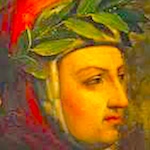
Petrarch
1304 – 1374 CE
The “Father of Humanism,” troubadour of romantic love, lover of nature, “Virgil born again,” the most famous unrequited lover, and most important poet of his age; Petrarch inspired an interest in ancient history and as “the first tourist” discovered and translated many old manuscripts including Cicero’s letters that sparked the 14th-century Renaissance. Holding the sense over the words, he challenged orthodoxy and invented new Latin terms to describe Greek philosophy, developed the concept of an historical “Dark Age” after the fall of Rome, a need for a cultural revival, inspired the political, military, and religious leaders of his time to ground their lives in classical values and contemplation. and his sonnets became a model for lyrical poetry through modern times.
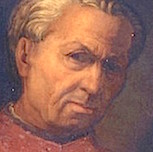
Poggio Bracciolini
1380 – 1459 CE
Gladiatorial orator, personal secretary to 7 popes including the “Antipope” John XXIII, scholar, early humanist, prolific and for his time astonishing writer; Poggio helped develop the Italic font, invented the Roman font still popular today, and helped spark a rebirth of old wisdom that led Europe out of the Dark Ages, into science and our modern age. Profuse traveller, friend to the great scholars of his time as well as politicians like Pope Nicolas V, Cosimo and Lorenzo de' Medici who supported his efforts to find and preserve ancient Greek and Roman manuscripts; he discovered and copied a large number of important classical works forgotten and decaying in old libraries including De Rerum Natura, Lucretius’ only surviving book.

Teresa of Avila
1515 – 1582 CE
In a time caught up in the fury and violence of religious intolerance, inquisitions and sectarian war: Teresa symbolized a child-like devotion and surrendering to a forgiving and compassionate god. Saint, reformer, founder of 40 Carmelite monasteries, author and theologian; with deep insight she championed and helped establish a tradition for western mysticism and was the first in the West to harmonize a scientific view with contemplation and a mystical understanding. An inspiration for the Spanish Renaissance and Christian meditation practice, she promoted “mental prayer” and a personal approach to spirituality.
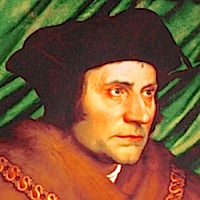
Thomas More
1478 – 1535 CE
Thomas Moore (1478 – 1535)
Christian humanist, Henry VIII confidant, ascetic, Lord High Chancellor of England, brave psychological explorer; Moore both embraced and went beyond his time and culture. On one hand opposing Martin Luther and the Protestant Reformation, he also protested against Henry VIII’s appropriation of the title, Supreme Head of the Church of England and was beheaded for his efforts. Living at a time of deep cultural transition when idle noblemen raised rents, created land enclosures, caused extreme poverty, starvation, and 72,000 English thieves were hanged; he helped revive a radical interest in Lucretius and Epicureanism. His book Utopia envisioned a society based on the pursuit of collective happiness and included universal health care, public housing, child care centers and a 6-hour work day rather than the prevalent materialism, nepotistic, personal advantage and power. G. K. Chesterton, Jonathan Swift, and many others considered him the greatest Englishman.
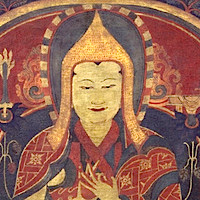
Tsongkhapa ཙོང་ཁ་པ། (Zongkapa Lobsang Zhaba, "the Man from Onion Valley")
1357 – 1419 CE
Born into a nomadic family with a Mongolian father and a Tibetan mother, Tsongkhapa became a famous teacher and founder of the Tibetan Buddhist Gelug school. His study and teachings stretched across many different lineages and he emphasized a blending of teachings, a unifying of different approaches, a balance of intellect and meditation. He used logic to undermine belief and open doors to insight much deeper than the words. His deep understanding of Buddhist teachings led to a fresh, innovative, and contemporary explication that became a dynamic influence on Tibetan Buddhism, culture, monasticism, and politics.
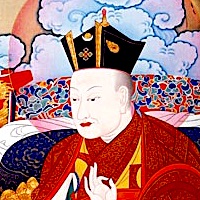
Wangchuk Dorje (9th Gyalwa Karmapa)
1556 – 1603 CE
Not only a great scholar and spiritual leader, Wangchuk Dorje became an important political influence. While helping the king of Sikkim settle a dispute, he founded three monasteries including Rumtek—still today the most important Kagyu monastery. As the 9th Karmapa and head of the Kagyu School of Tibetan Buddhism he travelled throughout Tibet, Mongolia, Bhutan, and Sikkim. He wrote many classic texts still studied and taught today.

William of Ockham
1287 – 1347 CE
Major intellectual figure during medieval times, Franciscan friar at the center of the biggest political controversies of his era, and famous for his principle now called Occam’s razor; William of Ockham’s commentaries were condemned by a council of bishops and he was commanded to defend himself at a papal court. Instead, he fled the country, took refuge with the Holy Roman Emperor, and was excommunicated. One of the first to encourage a strong separation between church and state, a liberal democratic ideology, and social contract theory; his Occam's Razor theory became a small-is-beautiful, less-is-more foundation for modern science and natural philosophy.
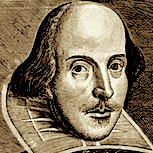
William Shakespeare
1564 – 1616 CE
The greatest writer in the English language whose works - 400 years after his death - have been translated into every living language and remain popular, respected, studied, and performed throughout the world; Shakespeare was as Ben Johnson wrote, "not of an age, but for all time.” When 18 years old, he had his first child 6 months after getting married and before long became a playwright and actor in his own and others’ plays. Unlike many of the prime movers on our biography lists, Shakespeare, though not revered, was successful during his lifetime (as a businessman) and by the time he was 33 while living in London owned the second largest home in Stratford. His influence not only revolutionized drama, scholars link more than 20,000 pieces of music to his writings, many famous paintings, his language helped shape modern English and common everyday phrases, Sigmund Freud drew heavily on him while developing his psychology theories, and Durant describes his influence as moving us to the depths of our spirit.
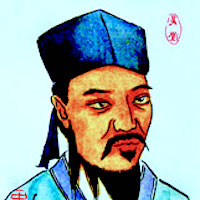
Wu Cheng 吴澄
1249 – 1333 CE
"Mr. Grass Hut"
Important scholar, poet, and professor; Wu Cheng supported and continued the Neo-Confucian movement begun by Zhu Xi. He went further than Zhu Xi’s emphasis on synthesizing the different traditions, included more Taoism, and worked to extend the standard curriculum beyond just the Four Books. He opposed superstitious beliefs and criticized the way scholars understood and practiced divination techniques. He wrote popular commentaries on the Tao Te Ching and most of the classic Chinese texts but his biggest influence was as a teacher and through his students who developed the School of the Mind and Heart during the Ming (1368-1644) and Qing (1644-1912) dynasties.
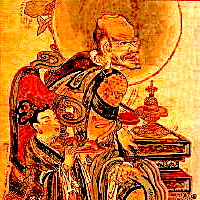
Yoshida Kenkō 兼好
1284 – 1350 CE
Inspiration of self-reinvention
After a life working as an officer of the guards in the Imperial palace, Kenko became a monk and one of the most famous authors of his era. His speculations on universal themes like beauty, nature, impermanence, and friendship found a deep resonance of feeling during his own time, one that continued fresh through the time since, and one remains part of Japanese school curriculum today. A paragon demonstrating the ever-present possibilities of re-inventing ourselves, Kenko’s transformation from a menial worker into an insightful sage became an inspiration in itself, beyond the wisdom in his essays and poems themselves.

Yung-lo 永樂 (the Yongle Emperor, Zhu Di)
1360 – 1424 CE
Son of the farmer-Buddhist monk-general who ended the Yuen dynasty and became emperor, Yung-lo was born into luxury and power. But later, in order to escape assassination attempts, had to pretend madness and become a vagrant. Transforming this disaster into opportunity, he became emperor himself. As emperor, at a time when the next largest navy in the world had 300 small ships, he built a fleet of over 3500 huge vessels that sailed all over the world and established colonies from Africa to the United States more than 70 years before Columbus. He moved his capital to Beijing, built the Forbidden City, promoted a world-wide surge in science, education, and religious tolerance and supporting Tibetan Buddhism started the Karmapa’s Black Crown Ceremony.
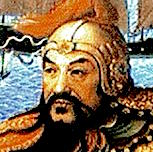
Zheng He 鄭和
1371 – 1435 CE
Emperor Zhu Di’s closest advisor, over 100 kg, over 2 meter tall formidable eunuch soldier, and famous Muslim explorer; Zheng He and the other admirals he trained in ships 4-5x bigger than Columbus’s sailed through the Strait of Magellan 98 years before Magellan, up and down the North American coasts 70 years before Columbus, surveyed the Arctic polar region and Antarctica 400 years before Europeans, Australia 300 years before Captain Cook, and rounded the Cape of Good Hope 66 years before the Portuguese Dias. Modern scholars credit him with "reshaping Asia" and propose that all of 15th century naval history was basically his story and the consequences of his voyages. Commanding a fleet of over 2000 ships carrying libraries of over 11,000 books to share information and technology with the rest of the world, Zheng He’s legacy is little known but one of the most influential in all history.
Quotes (3 Quotes)
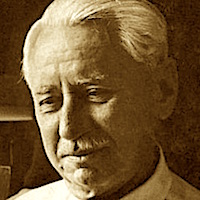
“The Renaissance was enamored of literature and style, politely interested in philosophy, almost indifferent to science... the development of the Inquisition in Italy, and the dogmatic decrees of the Council of Trent made scientific studies increasingly difficult and dangerous after 1555.”
Comments: Click to comment
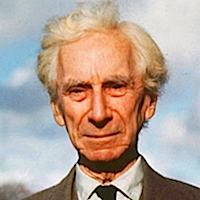
“After the 3rd century BCE, no very important progress was made. At the time of the Renaissance, however, something of what the Greeks had done became known, and greatly facilitated the rise of modern science.”
Comments: Click to comment
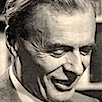
“This history of Europe during the later Middle Ages and the Renaissance is largely a history of the social confusions that arise when large numbers of those who should be seers abandon spiritual authority in favor of money and political power.”
Comments: Click to comment
Western Eras
Agricultural Revolution (10500 – 4000 BCE)
Sumerian (Mesopotamia) Civilization (4400 – 3100 BCE)
Egyptian Civilization (3150 – 305 BCE)
Babylonian Civilization (1895 – 619 BCE)
The Axial Age, “The Great Leap of Being” (800 – 200 BCE)
Greek Civilization (480 – 146 BCE)
Roman Civilization (100 BCE – 395 CE)
Early Middle Ages (566 – 1095 CE)
High Middle Ages (1095 – 1304 CE)
The Age of Reason: The Enlightenment (1620 – 1800 CE)
Post-Romantic Age (1850 – 2018 CE)
American Civil War (1861 – 1865 CE)
Comments (0)